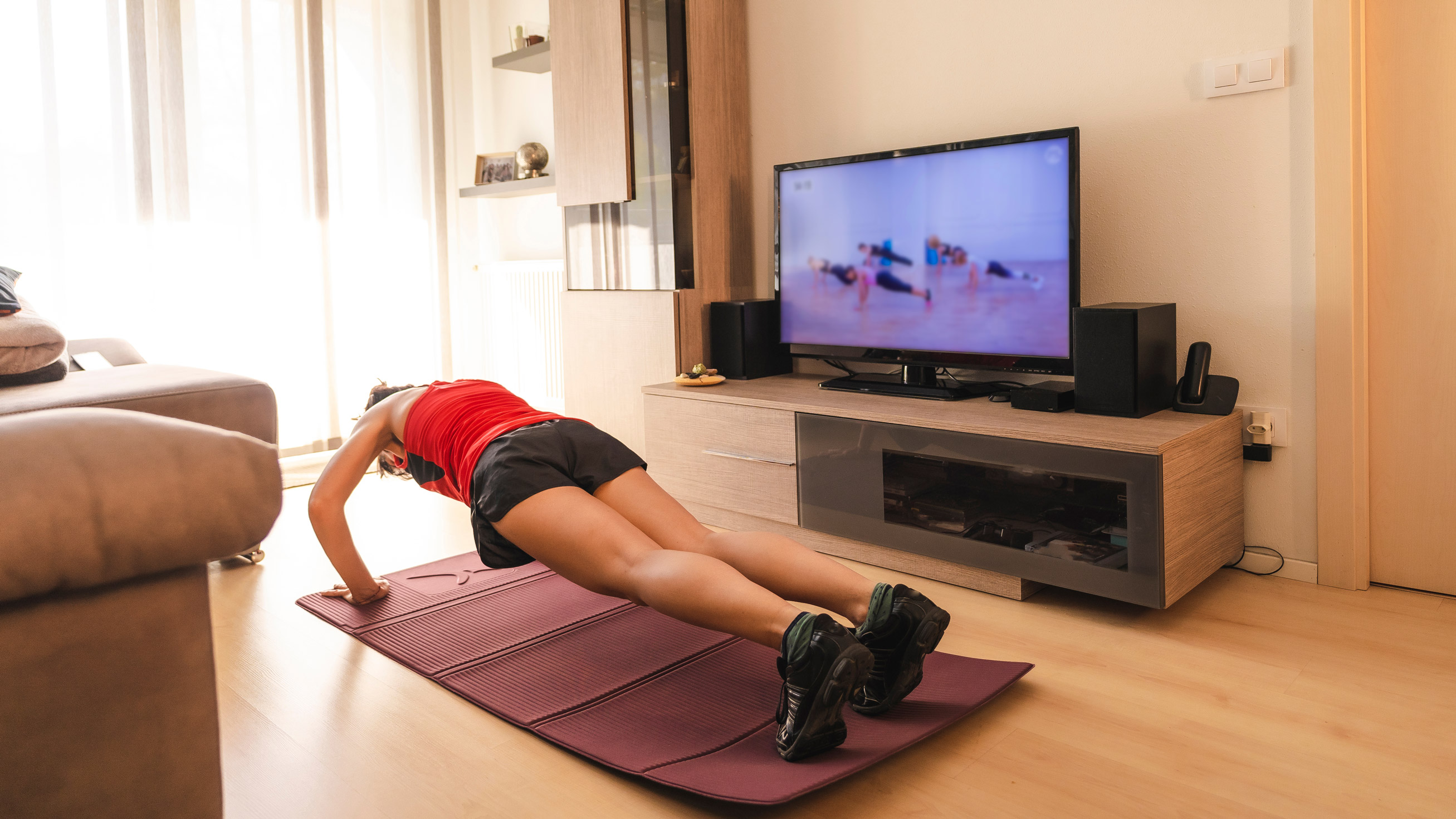I tried this popular YouTube abs workout with 484 million views, and it has issues
Chloe Ting’s YouTube abs workout is the most popular I’ve ever seen

There’s lots of free fitness content online right now, but how do you know if it’s any good? If you’re a beginner looking to get into fitness this year, you may have perused YouTube to check out some of the thousands of free workout videos you can access on the platform.
Among some of the most popular channels are Joe Wicks, a UK-based personal trainer who was dubbed 'the nation’s PE teacher' for his child-friendly videos over lockdown, and Yoga With Adriene, a yoga instructor whose 30 Days of Yoga series has become a January mainstay among at-home yogis, and a perfect jumping-on point for new starters.
There are also plenty of pilates and HIIT-inspired equipment-free workouts on the site, and all these workouts can be done at home with no additional equipment: just some comfortable clothes, and perhaps one of the best yoga mats. You can use a fitness tracker or running watch to monitor your calorie expenditure and heart rate, but it’s not essential.
You can run YouTube on any of the best TVs – almost any TV with an internet connection, come to that – so it’s easy to follow along with a workout in your front room.
As someone who loves running and working out in the gym, I’ve not actually followed a YouTube workout for many years, but as I’m keenly aware that streaming free workouts is how lots of people are going to get their starts in fitness this year, I thought I’d try the most popular one I could find – Get Abs in 2 Week from YouTuber Chloe Ting, which has racked up almost half a billion views.
The workout uses moves designed to hit your abdominal muscles, along with HIIT training principles: two sets of 30 seconds on, 10 seconds rest, repeat. I’m a little skeptical: any time you get claims like ‘abs in X weeks’ my gut reaction is to run. But as so many people are doing the workout, I thought I’d give it a go anyway.
Watch the workout below:
What's good about it?
To start with, I’m happy to say this workout really gave my core a test. I’ve not done a dedicated abs session in a long time, and the one minute of work/10 seconds of rest structure means a sustained amount of stress on your core in a short amount of time.
It hit my obliques, rectus abdominis (the ‘six pack’ muscles) and even worked my lower back, using the whole ‘trunk’ of the body. Those final reverse-crunch-leg-extensions were tough, and I felt the muscle soreness the next day. Not bad for a workout over and done in under 15 minutes.
Sign up for breaking news, reviews, opinion, top tech deals, and more.
Arms also got a look in, as the workout contains several sets of ‘up and down planks’ in which you start in a push-up position, lower your arms down to a plank position, and repeat. This move can be seen around the 6:30 timestamp on the video above, training your triceps as you push yourself up, and your biceps if you lower yourself slowly, under control. It’ll also hit your deltoids, or shoulder muscles.
Building muscle in this way is great for long-term health and fitness. Research has found that “adequate levels of muscle mass are an important issue from a health standpoint because its low levels are associated with increased risks of several diseases such as cardiovascular disease and cardio-metabolic risk in adolescents, as well as type II diabetes in middle-aged and older adults”. If you’re looking for a workout to develop your core muscles, Chloe Ting’s workout will do.

What's bad about it?
There are a few major points to discuss here. For starters, don’t believe anyone when they claim a routine will help you 'get abs in two weeks'. For one thing, everyone’s body is different, and what works for some people may not get results for others. For another, you can do all the leg lifts you want, but you will only see your abdominal muscles if you already have a very low body fat percentage.
The content of the video might be a workout to strengthen your core, but the title and messaging is very misleading. This sort of messaging is rife in the fitness industry and especially online, where there are very little restrictions on the claims that wellness influencers can make.
If an individual follows this routine for two weeks, and doesn’t get the results advertised, it may contribute to unhealthy issues around body image. Suspect social media 'fitness hacks' and advertisements telling their target audience to get 'beach body ready' face similar issues.
There’s another issue I found with Chloe’s workout: some of the moves could (and arguably should) be switched up in order to prevent damaging your back, especially if you plan to do this workout a lot. I felt no muscle engagement during the 'heel taps', but the real danger is the crunches.
Research published in the Journal of Orthopaedic Sports Physical Therapy found sit-ups and crunches exerted pressure on the spine, pressing it against the hard floor in an unnatural way, which can lead to back-pain issues. The US army has recently ended mandatory crunches in its fitness tests, replacing them with planks for time, which exert less pressure on your back while still hitting your core.
Should you do it?
Yes, with caveats. Problematic clickbait messaging aside, I actually like the workout – I think it’s short, convenient, and great for core strength. A strong 'trunk' region supports all kinds of different exercises, from running to rock climbing, so I feel as though it's going to be a good way to squeeze a bit of movement into my day, if I'm really strapped for time, while still making progress on my overall goals.
However, I will be swapping the crunches, reverse crunches and heel taps for 30 seconds of a different core exercise, which doesn’t place strain on my lower back. And I won't be doing it every day to get abs; it'll be every once in a while to continue developing my core, in order to maintain good posture for running.
This isn't the first popular workout I've tried: I've recently had a go at Henry Cavill's Witcher workout moves, which was another tough one to test.

Matt is TechRadar's expert on all things fitness, wellness and wearable tech.
A former staffer at Men's Health, he holds a Master's Degree in journalism from Cardiff and has written for brands like Runner's World, Women's Health, Men's Fitness, LiveScience and Fit&Well on everything fitness tech, exercise, nutrition and mental wellbeing.
Matt's a keen runner, ex-kickboxer, not averse to the odd yoga flow, and insists everyone should stretch every morning. When he’s not training or writing about health and fitness, he can be found reading doorstop-thick fantasy books with lots of fictional maps in them.